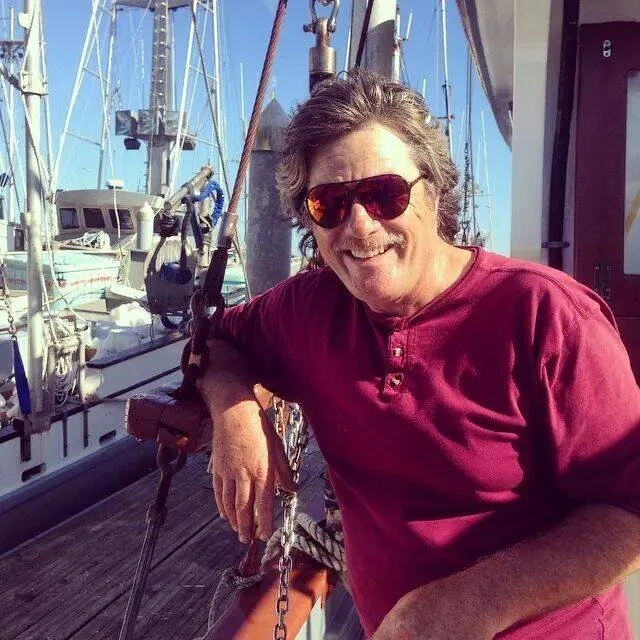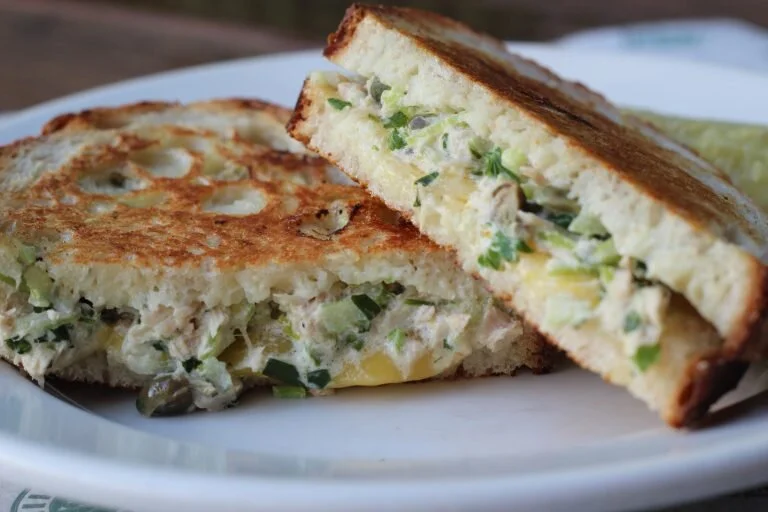top-tier tuna from the oregon coast
It’s mid-June and Captain Rick Goche is gathering supplies and packing provisions as fast as he can. Any minute now, the migrating Pacific Albacore will return and he’ll guide the 52-foot F/V Peso II out of port of Coos Bay, Ore., into the Pacific in search of tuna.
Trolling waters from the Southern Oregon to the Canadian border, Goche, fishing alongside his brother, catches albacore by hand with hook and line (watch this video). During summer Pacific Albacore season, he’ll be at sea for two weeks at a time, making half a dozen trips before the fish move on. His tuna, packed in cans in their own natural oils and sold under the label Sacred Sea, is the star of every Grand Central tuna salad sandwich and tuna melt.
Hook and line, one at a time
Sustainable, troll-caught hook-and-line tuna preserves the quality of the fish and almost eliminates by-catch, where fish and other sea animals are caught by mistake and often killed.
Captain Rick catches albacore one by one, and the fish don’t spend time in nets or waiting on board. Each is quickly dispatched, bled and cleaned then plunged into a tank with zero degree brine. (Studies show that this is not only more humane, but makes fish taste better.) Within an hour, the tuna is frozen solid and will stay that way until it’s processed on shore, usually in August, between trips out to sea.
Extra care, better flavor
This careful treatment and flash-freezing, says Captain Rick, “makes us different from even the local guys.” Bleeding the albacore needs to be done right away and skillfully, or it leaves a metallic aftertaste. The extra time and care he puts into catching and processing yields mild, delicate chunks of tuna with high-quality omega 3 and omega 6 oils.
What’s more, albacore pass through our waters when they’re young and haven’t been in the food chain long enough to accumulate environmental toxins. Local tuna is exceptionally low in mercury and radiation, according to Oregon State University’s Sea Grant program. “I feed it to my grand kids every day without pause,” he says.
(Standard store-bought canned tuna is caught with nets in the South Pacific, the Indian Ocean and the South China Sea, and the older fish that migrate through those faraway waters test higher for toxins.)
Caught in the Northwest, processed in Oregon
Sacred Sea Tuna – Captain Rick’s label – is packed with Omega-3 and Omega-6 fatty acids. It’s processed in Charleston, Ore., in a facility employing 50 people. The tuna is cooked in its own juices in a pouch or can, so the heart-healthy oils stay with the fish rather than being drained off. “It’s a really clean product,” says Laura Heinlein, a Grand Central Bakery kitchen manager. “They’re just big, nice solid chunks of tuna.”
We toss it with handfuls of chopped fresh local tarragon (from Viva Farms in Seattle), a bit of Italian parsley, fresh celery, lemon juice, capers and touch of mayo. It makes a fine tuna salad sandwich, and an even better tuna melt. “We don’t put a lot of stuff in it,” Heinlein says. “You really are tasting the tuna.”


